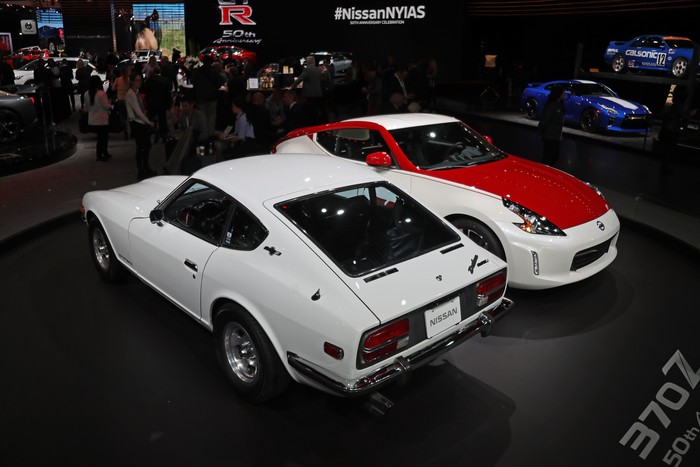
Nissan wants to develop the next Z, GT-R in house
The company won't seek a partner to split the costs with.
As the sports car segment shrinks, automakers are increasingly forging alliances to split the rising cost of developing new models. Toyota teamed up with BMW to resurrect the Supra, for example. Nissan has announced it won't follow this trend.
"It's in the Nissan DNA and its heritage to keep everything in house," company spokesperson Kyle Torrens told Motor1 when asked about the replacements for the 370Z and the GT-R.
His comments suggest Nissan's next-generation sports cars will not share a platform, an engine, or other major components with models made by another automaker. The Japanese firm is under the same roof as Renault and Mitsubishi, and it collaborates with both brands "all the time," according to Natalie Roe, Nissan's chief marketing manager. However, there's not much in either company's parts bin that could help accelerate the development of a high-performance car like the GT-R.
Nissan pioneered the modern, mass-market electric car when it released the original Leaf in 2010. We're still waiting for additional electric models from the company, including a long-rumored Leaf-based crossover, but the Z (pictured) and the GT-R are unlikely to ditch gasoline in the near future.
"I think you have both, a purist and an EV [performance car]. I don't think we're going to completely get away from the internal combustion engine, at least for a while," Roe told Motor1. Her comments echo the ones made recently by Hiroshi Tamura, the chief product specialist for Nissan's Nismo division and the GT-R. He explained turning the GT-R into a hybrid would make it too expensive.
The report adds an additional piece to the puzzle. Nissan has previously confirmed it plans to replace both the 370Z and the GT-R; performance hasn't reached the end of the line. Neither car is likely to go hybrid, and both will be entirely designed by Nissan. We still don't know when we'll see them, what they'll look like, or what they'll be powered by, but we expect to learn more over the coming months.